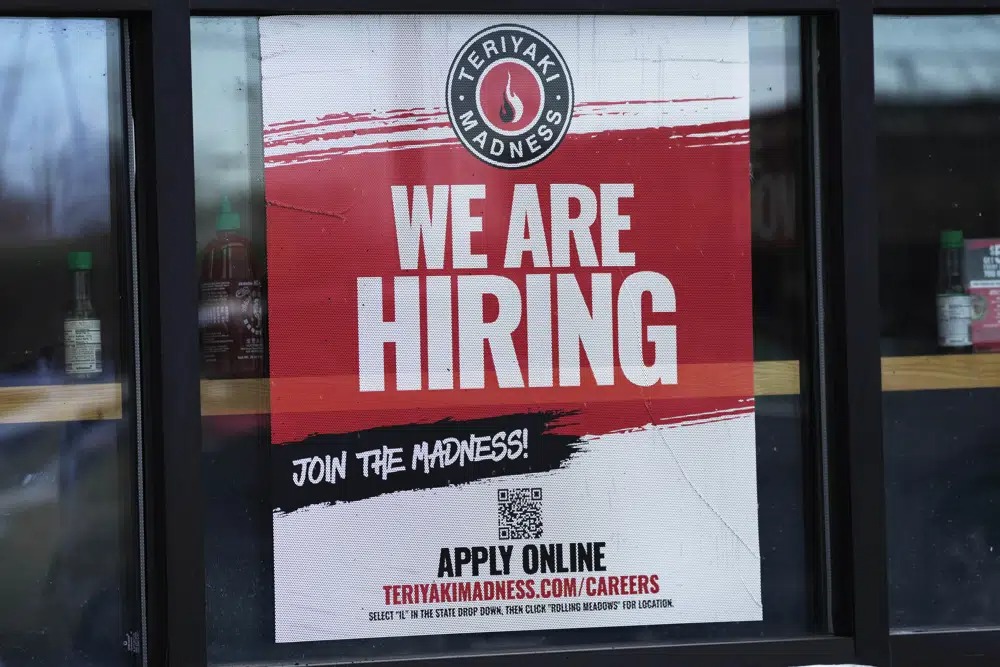For nearly a year, the Federal Reserve has been on a mission to cool down the job market to help curb the nation’s worst inflation bout in four decades.
The job market hasn’t been cooperating.
Consider what happened in January: The government said Friday that employers added a sizzling 517,000 jobs last month and that the unemployment rate dipped to 3.4%, the lowest level since 1969. The job gain was so large it left economists scratching their heads and wondering why the Fed’s aggressive interest rate hikes haven’t slowed hiring at a time when many foresee a recession nearing.
Friday’s report instead added to the picture of a resilient U.S. labor market, with low unemployment, relatively few layoffs and many job openings. Though good for workers, employers’ steady demand for labor has also helped accelerate wage growth and contributed to high inflation.
But the Fed’s inflation watchers might be reassured somewhat by January’s wage data: Average hourly pay rose 4.4% last month from a year earlier, slower than the 4.8% year-over-year increase in December. And from December to January, wages rose 0.3%, below the 0.4% increase the previous month.
On top of the sizzling job growth it reported for January, the government on Friday also revised up its estimate of the gains in November and December by a combined 71,000.
January’s hiring was broad-based across industries. A category that includes restaurants and bars added 99,000 workers. Professional and business services jobs, including bookkeepers and consultants, rose by 82,000.
Governments added 74,000, boosted by the end of a worker strike against California’s state university system. Health care added 58,000 jobs, retailers 30,000. Construction gained 25,000 jobs. Manufacturing added 19,000.
Economists had collectively estimated that the economy added just 185,000 jobs last month.
“This is a labor market on heat,” said Seema Shah, chief global strategist at Principal Asset Management. It would be difficult, she suggested, “to see the Fed stop raising rates and entertain ideas of rate cuts when there is such explosive economic news coming in.”
January’s job growth far exceeded December’s 260,000 total and extended a streak of substantial gains. In part out of concern that those job gains would keep inflation high, the Fed has raised its key rate eight times since March to try to contain inflation, which hit a 40-year high last year but has slowed since then.
Companies are still seeking more workers and are hanging tightly onto the ones they have. Putting aside some high-profile layoffs at big tech companies like Microsoft, Google, Amazon and others, most workers are enjoying an unusual level of job security even at a time when many economists foresee a recession approaching.
For all of 2022, the economy had added a sizzling average of roughly 375,000 jobs a month. That was a pace vigorous enough to have contributed to the painful inflation Americans have endured, the worst such bout in 40 years. A tight job market tends to put upward pressure on wages, which, in turn, feed into inflation.
But year-over-year measures of consumer inflation have steadily eased since peaking at 9.1% in June. Still, at 6.5% in December, inflation remains far above the Fed’s 2% target, which is why the central bank’s policymakers have reiterated their intent to keep raising borrowing rates for at least a few more months.
The Fed is aiming to achieve a “soft landing” — a pullback in the economy that is just enough to tame high inflation without triggering a recession. The policymakers hope that employers can slow wage increases and inflationary pressures by reducing job openings but not necessarily by laying off many employees.
But the job market’s resilience isn’t making that hoped-for outcome any easier. On Wednesday, the Labor Department reported that employers posted 11 million job openings in December, an unexpected jump from 10.4 million in November and the largest number since July. There are now about two job vacancies, on average, for every unemployed American.
And in response, many employers have raised wages.
Stew Leonard Jr., CEO of Stew Leonard’s, a supermarket chain in Connecticut, New York and New Jersey, said the company’s series of hourly wage increases over the past two years have helped expand the job applicant pool . Entry-level hourly wages are now at $17.
For more specialized workers like butchers and bakers, hourly starting wages are $25 to $30. That has helped the chain attract about 10 to 12 applicants per job posting, the same level as before the pandemic. Earlier, the chain had been receiving as few as seven applicants per posting.
“If you want good people, you have to pay,” Leonard said. He said he’s unsure whether the chain will have to keep raising pay.
“It’s almost a day-to-day decision,” he said. “But right now, we are happy.”
Over the past year or so, the job market has earned the label “The Great Resignation” because jobs are so plentiful and many workers are willing to change jobs to seek better pay or working conditions.
Centura Health, a nonprofit that runs hospitals and clinics in Colorado and Kansas, has offered $15,000 “retention” bonuses to retain nurses, respiratory therapists and others for 24 months; 2,500 have accepted the offer. And for employees who perform routine but vital tasks such as changing sheets and delivering meals to patients, Centura has raised entry-level hourly pay as high as $18.
By streamlining the hiring process and directing managers to prioritize the filling of vacancies, Centura has slashed the amount of time needed between receiving an application and putting a new hire to work.
Sebastien Girard, who holds the title of “chief people officer,” said Centura has about 1,500 job openings each month. The market for clinical staff such as doctors, nurses and radiologists remains extraordinarily tight, he said, though it’s eased a bit recently for others.
Still, Girard doesn’t think labor shortages are going away: America’s aging population means there will be an ongoing scarcity of available workers.
“The Great Resignation is there to stay,” he said. “It is a generational shift.’
(AP)












One Response
It is very hard to have rising unemployment against a background of long term decline in birth rates combined with option of policies that discourage immigration. You may end up with a long term recession due to a shrinking work force, but unemployment won’t be the factor that defines recessions.